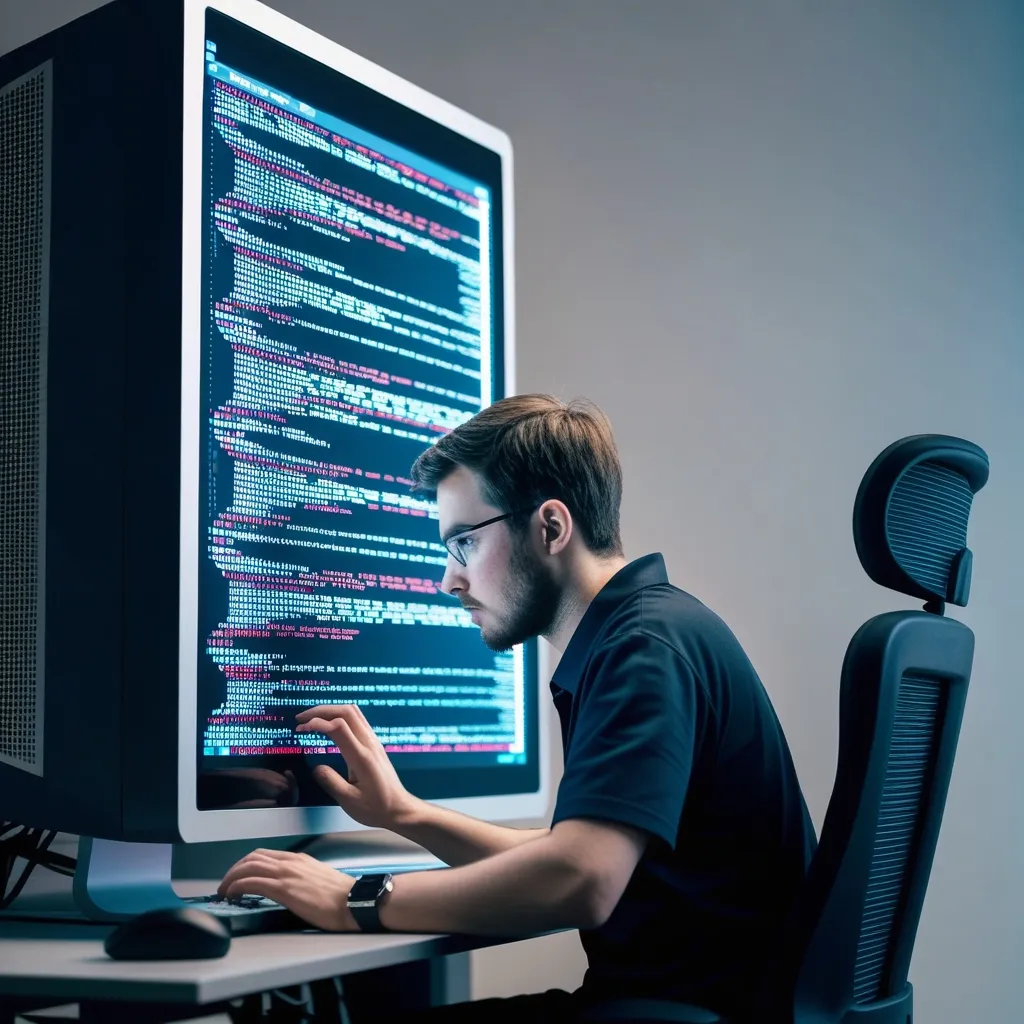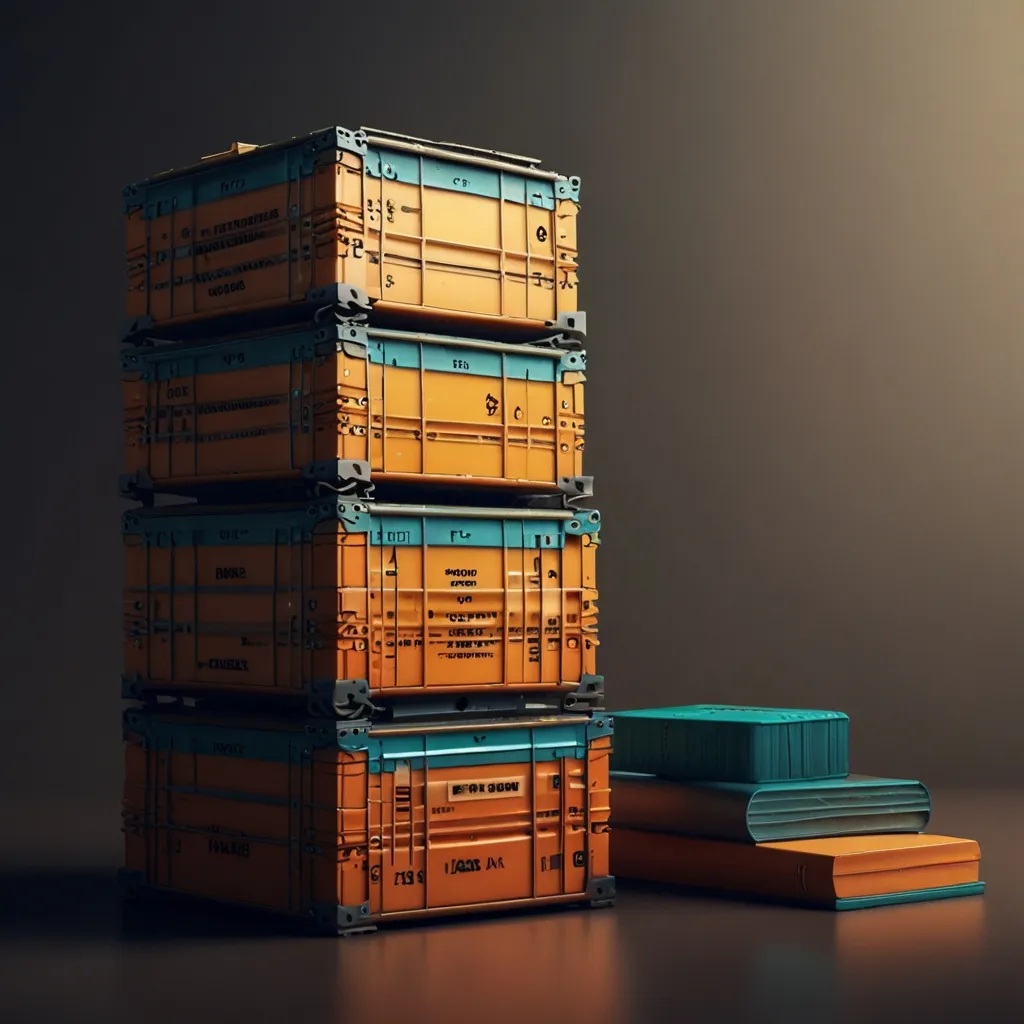Hey there, tech enthusiasts! Today, we’re diving into the exciting world of 3D object detection using YOLO and OpenCV. If you’re anything like me, you’ve probably been fascinated by how machines can “see” and understand the world around them. Well, get ready to explore this cutting-edge technology that’s revolutionizing everything from autonomous vehicles to augmented reality.
Let’s start with the basics. YOLO, which stands for “You Only Look Once,” is a real-time object detection system that’s been making waves in the computer vision community. It’s incredibly fast and accurate, making it perfect for applications that require quick processing of visual data. OpenCV, on the other hand, is an open-source computer vision library that’s been around for ages and is a go-to tool for image and video processing.
Now, you might be wondering, “Why 3D object detection?” Well, imagine you’re building a self-driving car. It’s not enough for the car to just recognize that there’s an object in front of it – it needs to know exactly where that object is in three-dimensional space. That’s where 3D object detection comes in handy.
To implement a 3D object detection system using YOLO and OpenCV, we’ll need to combine these powerful tools with some clever algorithms and a bit of math. Don’t worry, though – I’ll break it down step by step, and we’ll use some code examples to make things clearer.
First things first, we need to set up our environment. Make sure you have Python installed, along with the necessary libraries. Here’s a quick snippet to get you started:
import cv2
import numpy as np
from ultralytics import YOLO
# Load the YOLO model
model = YOLO('yolov8n.pt')
# Open the video capture
cap = cv2.VideoCapture(0)
while True:
# Read a frame from the video
ret, frame = cap.read()
# Run YOLO detection
results = model(frame)
# Process the results (we'll add more code here later)
# Display the frame
cv2.imshow('3D Object Detection', frame)
# Break the loop if 'q' is pressed
if cv2.waitKey(1) & 0xFF == ord('q'):
break
# Release the capture and close windows
cap.release()
cv2.destroyAllWindows()
This code sets up a basic video capture and YOLO detection loop. But we’re not doing any 3D detection yet – we’re just laying the groundwork.
To add the 3D aspect, we need to incorporate depth information. One way to do this is by using a stereo camera setup or a depth sensor like a Kinect. If you’re using a stereo camera, you’ll need to perform stereo rectification and disparity mapping to get depth information. Here’s a simplified example of how you might process stereo images:
import cv2
import numpy as np
# Assume we have two calibrated cameras
left_camera = cv2.VideoCapture(0)
right_camera = cv2.VideoCapture(1)
# Load camera calibration parameters (you'll need to calibrate your cameras first)
# These are just placeholder values
camera_matrix = np.array([[fx, 0, cx], [0, fy, cy], [0, 0, 1]])
dist_coeffs = np.array([k1, k2, p1, p2, k3])
while True:
# Capture frames from both cameras
ret1, left_frame = left_camera.read()
ret2, right_frame = right_camera.read()
# Undistort and rectify images
left_rectified = cv2.undistort(left_frame, camera_matrix, dist_coeffs)
right_rectified = cv2.undistort(right_frame, camera_matrix, dist_coeffs)
# Compute disparity map
stereo = cv2.StereoBM_create()
disparity = stereo.compute(cv2.cvtColor(left_rectified, cv2.COLOR_BGR2GRAY),
cv2.cvtColor(right_rectified, cv2.COLOR_BGR2GRAY))
# Convert disparity to depth (you'll need to calibrate this based on your setup)
depth = camera_matrix[0, 0] * baseline / (disparity + 1e-6)
# Now we have depth information to use with our YOLO detections
# Display the depth map
cv2.imshow('Depth Map', depth)
if cv2.waitKey(1) & 0xFF == ord('q'):
break
left_camera.release()
right_camera.release()
cv2.destroyAllWindows()
Now that we have depth information, we can combine it with our YOLO detections to get 3D positions of objects. Here’s how we might modify our original YOLO loop to incorporate depth:
while True:
ret, frame = cap.read()
# Run YOLO detection
results = model(frame)
for r in results:
boxes = r.boxes
for box in boxes:
x1, y1, x2, y2 = box.xyxy[0]
x1, y1, x2, y2 = int(x1), int(y1), int(x2), int(y2)
# Get the depth at the center of the bounding box
center_x = (x1 + x2) // 2
center_y = (y1 + y2) // 2
object_depth = depth[center_y, center_x]
# Calculate 3D position (assuming camera is at origin)
object_x = (center_x - cx) * object_depth / fx
object_y = (center_y - cy) * object_depth / fy
object_z = object_depth
# Draw bounding box and 3D position
cv2.rectangle(frame, (x1, y1), (x2, y2), (0, 255, 0), 2)
cv2.putText(frame, f'({object_x:.2f}, {object_y:.2f}, {object_z:.2f})',
(x1, y1 - 10), cv2.FONT_HERSHEY_SIMPLEX, 0.5, (0, 255, 0), 2)
cv2.imshow('3D Object Detection', frame)
if cv2.waitKey(1) & 0xFF == ord('q'):
break
This code snippet assumes you’ve already calculated the depth map as shown in the previous example. It then uses the depth information to calculate the 3D position of each detected object relative to the camera.
Now, I know what you’re thinking – “This seems like a lot of work!” And you’re right, it is. But that’s the beauty of computer vision and machine learning. We’re teaching machines to see and understand the world in three dimensions, just like we do. It’s complex, but it’s also incredibly powerful.
One of the challenges you might face when implementing this system is dealing with occlusions and partially visible objects. YOLO is great at detecting objects, but it might struggle with objects that are partially hidden or at odd angles. To mitigate this, you could consider using multiple cameras positioned at different angles, or incorporating other sensors like LiDAR for more accurate depth information.
Another thing to keep in mind is performance. 3D object detection can be computationally intensive, especially if you’re processing high-resolution images or video streams in real-time. You might need to optimize your code or use hardware acceleration (like CUDA with NVIDIA GPUs) to achieve real-time performance.
Let’s talk about some real-world applications of this technology. Autonomous vehicles are an obvious one – they need to accurately detect and locate other vehicles, pedestrians, and obstacles in 3D space to navigate safely. But there are plenty of other exciting applications too.
In robotics, 3D object detection can help robots grasp and manipulate objects more accurately. Imagine a robot in a warehouse that can not only identify items on shelves but also precisely locate them in 3D space for efficient picking and packing.
Augmented reality is another field that can benefit from 3D object detection. AR apps could use this technology to place virtual objects more realistically in the real world, taking into account occlusions and depth.
In security and surveillance, 3D object detection could provide more accurate tracking of people and objects, potentially improving safety in public spaces.
The possibilities are truly endless, and as the technology continues to improve, we’ll likely see even more innovative applications.
As we wrap up, I want to emphasize that implementing a 3D object detection system is no small feat. It requires a solid understanding of computer vision principles, some linear algebra, and good programming skills. But don’t let that discourage you! Like any complex topic, it’s all about breaking it down into smaller, manageable pieces and tackling them one at a time.
Start by getting comfortable with OpenCV and basic image processing. Then move on to understanding how YOLO works and how to use it effectively. Finally, dive into the 3D aspects – stereo vision, depth mapping, and 3D transformations. Take it step by step, and before you know it, you’ll be building amazing 3D vision systems!
Remember, the code examples I’ve provided are simplified for clarity. In a real-world implementation, you’d need to handle many edge cases, optimize for performance, and probably incorporate more sophisticated algorithms for things like camera calibration and 3D reconstruction.
So, are you ready to give it a shot? Grab your favorite IDE, fire up that webcam, and start exploring the fascinating world of 3D object detection. Who knows? Your experiments today could lead to the next breakthrough in computer vision tomorrow. Happy coding, and don’t forget to have fun along the way!





